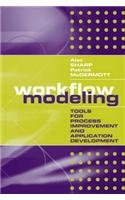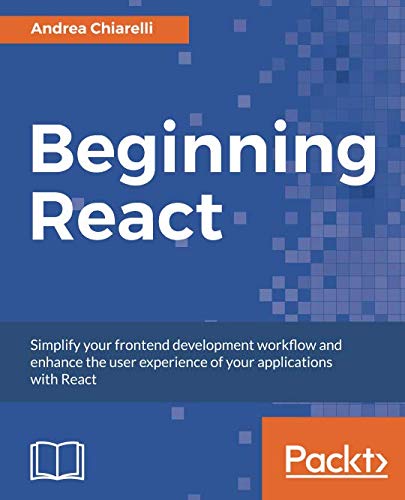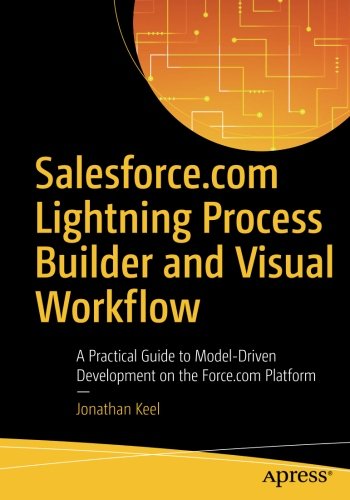Top development workflow for 2019
If you looking for development workflow then you are right place. We are searching for the best development workflow on the market and analyze these products to provide you the best choice.
Best development workflow
1. Git Version Control Cookbook - 90 Recipes to Transform your Development Workflow and Boost Productivity
Description
Key Features
- Filled with practical recipes that will teach you how to use the most advanced features of the Git system
- Improve your productivity by learning to work faster, more efficiently, and with more confidence
- Discover tips and tricks that will show you when and how to use the advanced features of Git
Book Description
Starting with the Git data model, you will learn how Git stores files and how it looks at commits. You will then learn how you can recover from mistakes; from committing on the wrong branch to recovering lost commits/files. Next, you will discover how you can force rebase on some branches and use regular Git merge on other branches. You will also learn how to extract information from the repository.
As you progress through this book, you will learn how you can automate the usual Git processes by utilizing the hook system built into Git. The book also covers advanced repository management, including different options to rewrite the history of a Git repository. Finally, you will discover how you can work offline with Git, how to track what is going on behind the scenes, and how to use the stash for different purposes.
What you will learn
- Understand the Git data model and how you can navigate the database with simple commands
- Learn how you can recover lost commits/files
- Discover how you can force rebase on some branches and use regular Git merge on other branches
- Extract metadata from a Git repository
- Familiarize yourself with Git notes
- Discover how you can work offline with Git
- Debug with Git and use various techniques to find the faulty commit
About the Authors
Aske Olsson has worked for Nokia for 6 years, where he was one of the leading forces behind complex tool transformation and renewal projects. Among them was a broad adoption of Git SCM, Gerrit Code Review, and Jenkins CI. Currently, Aske works at Schantz, a company developing advanced IT solutions for the financial sector. He develops and maintains their continuous delivery pipeline.
Rasmus Voss specializes in continuous integration, software releasing, and process automation. His vast knowledge on these areas has been built by a 10-year career in Nokia mobile phones in Copenhagen, Denmark and Beijing, China, where he started optimizing autotesting for the Series 30 platform. Today, Rasmus has his own company VossCon, where he consults with companies on how to make the most of developers and testers by optimizing software releasing, providing visibility in the delivery chain, upgrading the tool chain, automating tedious processes, and training developers. He also holds courses on Git, Gerrit, and Jenkins.
Table of Contents
- Navigating Git
- Configuration
- Branching, Merging, and Options
- Rebase Regularly and Interactively, and Other Use Cases
- Storing Additional Information in Your Repository
- Extracting Data from the Repository
- Enhancing Your Daily Work with Git Hooks, Aliases, and Scripts
- Recovering from Mistakes
- Repository Maintenance
- Patching and Offline Sharing
- Git Plumbing and Attributes
- Tips and Tricks
2. Workflow Modeling: Tools for Process Improvement and Application Development
Feature
Used Book in Good ConditionDescription
Providing proven techniques for identifying, modeling, and redesigning business processes, and explaining how to implement workflow improvement, this book helps you define requirements for systems development or acquisition.3. Beginning React: Simplify your frontend development workflow and enhance the user experience of your applications with React
Description
Take your web applications to a whole new level with efficient, component-based UIs that deliver cutting-edge interactivity and performance.
Key Features
- Elaborately explains basics before introducing advanced topics
- Explains creating and managing the state of components across applications
- Implement over 15 practical activities and exercises across 11 topics to reinforce your learning
Book Description
Projects like Angular and React are rapidly changing how development teams build and deploy web applications to production. In this book, youll learn the basics you need to get up and running with React and tackle real-world projects and challenges. It includes helpful guidance on how to consider key user requirements within the development process, and also shows you how to work with advanced concepts such as state management, data-binding, routing, and the popular component markup that is JSX. As you complete the included examples, youll find yourself well-equipped to move onto a real-world personal or professional frontend project.
What you will learn
- Understand how React works within a wider application stack
- Analyze how you can break down a standard interface into specific components
- Successfully create your own increasingly complex React components with HTML or JSX
- Correctly handle multiple user events and their impact on overall application state
- Understand the component lifecycle to optimize the UX of your application
- Configure routing to allow effortless, intuitive navigation through your components
Who this book is for
If you are a frontend developer who wants to create truly reactive user interfaces in JavaScript, then this is the book for you. For React, youll need a solid foundation in the essentials of the JavaScript language, including new OOP features that were introduced in ES2015. An understanding of HTML and CSS is assumed, and a basic knowledge of Node.js will be useful in the context of managing a development workflow, but is not essential.
Table of Contents
- Introducing React and UI Design
- Creating Components
- Managing User Interactivity
4. Git Version Control Cookbook: Leverage version control to transform your development workflow and boost productivity, 2nd Edition
Description
A series of practical recipes to simplify the Git learning experience and increase your productivity when using Git version control
Key Features
- Explore practical recipes to use Git's most advanced features
- Learn how Git references its objects and how history is recorded
- Use reflog and git fsck to recover lost information
Book Description
Git is one of the most popular tools for versioning. Git Version Control Cookbook builds on the success of the previous edition and provides you with an up-to-date guide to solving problems related to versioning.
You'll start by learning about the Git data model and how it stores files and looks at commits. By using simple commands, you'll learn how to navigate through the database. Once you have accustomed yourself to the basics, you'll explore techniques to configure Git with comprehensive examples and configuration targets. You'll gain insights into improving your understanding of branches and recovery from mistakes right from committing to a wrong branch to recovering lost commits or files. You'll then move on to discovering the features that Git rebase has to offer and use regular Git merge on other branches. You'll explore Git notes and learn how to utilize the update, list, and search commands. In addition to this, you'll learn how to extract metadata from repositories and automate your daily tasks using Git hooks. You'll then study in detail repository maintenance, patching, and offline sharing. By the end of the book, you'll have grasped various tips and tricks for everyday usage, while increasing your knowledge of Git providers, integrations, and clients.
What you will learn
- Understand the Git data model and use commands to navigate the database
- Find out how you can recover lost commits or files
- Force a rebase on some branches and use regular Git to merge on the rest
- Master the techniques required to extract metadata from repositories
- Explore Git notes and learn about the various features that it offers
- See how to decode different subcommands
Who this book is for
The Git Version Control Cookbook is for you if you are a developer or Build Release manager looking for a full-fledged practical guide that will take your Git knowledge to the next level. Basic knowledge of GNU tools and shell or bash scripting is needed.
Table of Contents
- Navigating Git
- Configuration
- Branching, Merging, and Options
- Rebasing Regularly and Interactively, and Other Use Cases
- Storing Additional Information in Your Repository
- Extracting Data from the Repository
- Enhancing Your Daily Work with Git Hooks, Aliases, and Scripts
- Recovering from Mistakes
- Repository Maintenance
- Patching and Offline Sharing
- Tips and Tricks
- Git Providers, Integrations, and Clients
5. Salesforce.com Lightning Process Builder and Visual Workflow: A Practical Guide to Model-Driven Development on the Force.com Platform
Description
Learn how to build logic into your apps by configuring Salesforce.comLightningProcess Builder and Visual Workflow software tools to meet the needs of your organization without the use of code. You will be able to build workflow diagrams on the Salesforce.com platform and perform complex logic. Individuals who have created workflow diagrams in other applications (e.g., Microsoft Visio) will feel very comfortable using these two tools from Salesforce.
If you find yourself in a situation where a standard Salesforce configuration does not meet your needs, you can always rely on a developer to extend the functionality through Visualforce and Apex code. What if you could take back that control and not rely on a developer or consultant? With two new technologiesProcess Builder and Visual Workflowintroduced onto the Salesforce.com platform, you can accomplish much of what was normally handled with Apex code.LightningProcess Builder and Visual workflow both allow for advanced logic that standard configuration such as Salesforce.com Workflow cannot do. Salesforce.comLightningProcess Builder and Visual Workflow details how these technologies can be used to:
- Create a call center application that guides operators through a call with screens that change based on the callers responses.
- Automatically submit approvals to speed up and streamline your business.
- Update related records for any object being modified, including standard and custom objects.
6. Workflow Modeling: Tools for Process Improvement and Application Development, 2nd Edition









Recent Comments